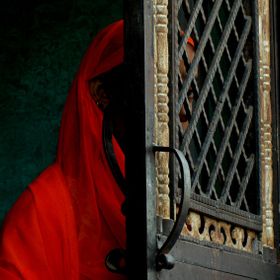

DavidForbesPhotography
FollowThis is a full frame shot of a leopard pre-dawn in the Kruger National Park, South Africa. I was using a Canon 550D camera with a 300mm Canon 2.8 lens with a 1....
Read more
This is a full frame shot of a leopard pre-dawn in the Kruger National Park, South Africa. I was using a Canon 550D camera with a 300mm Canon 2.8 lens with a 1.5 doubler. The picture has not been cropped or altered in any way.
Read less
Read less
Views
551
Likes
Awards
Action Award
Member Selection Award
Summer Selection
Same photographer See allBehind The Lens
Behind The Lens
Location
I took this photo from a car I was driving in the southern Kruger National Park. My wife and I (both photographers) woke before dawn and left the camp as the gates opened. We turned down a road and shortly afterwards saw this leopard step into the road. There was another vehicle with us, so we were driving parallel, following the leopard, which had a dark wet patch on the left side of his face. It was either blood or he had rubbed himself in something. It looked ugly to photograph, so I constantly had to try and frame it out. He must have walked down the road for about 10 minutes, unconcerned about the two vehicles, until finally he vanished into the bush.Time
We left pre-dawn, so we had headlights on when we first spotted this leopard on the road. He wasn't bothered by it. The light gradually improved, but he left the road before the sun rose.Lighting
It was completely natural light, from darkness to dawn. Fortunately for us, the dawn was coming behind us, so the leopard was front-lit and the more illuminated sky is reflected in his eyes.Equipment
I had a Canon 650D DSLR with a 300mm Canon T2.8 fitted with a 1.5x adapter. The photo is exactly as shot, full frame, no manipulation or anything. At one point the leopard lay down and rubbed his neck on the road, perhaps marking his territory. It was at this point that I drove as close as I could to frame out the tarmac and took the pic. I balanced the lens on my hand, resting on the door of the car and held my breath while taking the photo to help prevent blur. I was shooting probably wide open, and quite close to minimum focus and at a slow shutter speed.Inspiration
I love wildlife photography. It requires great patience, an excellent sense of anticipation, and a thorough understanding of animal behaviour. It's a real challenge, because the best photos are often taken in the poorest light, at sunset or sunrise, using a slow telephoto lens, hand-held, wide open aperture and a slow shutter speed. Many thousands of photos have been tossed out because of camera shake or blur or poor focus. Leopards are my favourite animals, right up there next to elephants. They are very elusive, beautifully camouflaged, and very smart, shy animals that are also noctural (adding to the challenge). Any pictures of a leopard attract me. They are for me the epitome of natural beauty, elegance and danger. To get so close, and to have a clear shot without any grass/leaves/twigs etc obscuring my view of his face was just amazing and breathtaking.Editing
No. No cropping, no processing, nothing. The photo is EXACTLY as I took it, framing, exposure etc.In my camera bag
We share a bag, my wife Nadine and I. We have two DSLRs, a 550D and a 650D. She has a Canon 100-400mm and I have a Sigma 150-600. We also have a 18mm-135mm Canon lens. I have tripods etc because I am also a filmmaker, but they are usually too cumbersome for wildlife work. We have lots of cards and batteries, and our game drive vehicle is rigged out with a series of trays for our equipment so we can reach it in a hurry. The windscreen folds down so we have a clear view all around for filming and photographing. We work with what many professionals would probably consider inferior equipment, but camera gear is so expensive in South Africa that we cannot afford the best gear, and so we have to "punch above our weight". Usual cleaning/waterproof gear too.Feedback
You need time (lots of it) and patience. You need to have a good understanding of animal behaviour so that you know what the animal is likely to do, how it will behave and react, and what its habits are likely to be. This helps enormously to anticipate its behaviour and get yourself in the right spot for that great photo. You have to be able to sit and watch and wait for long times, and remain alert for that precious moment when you can capture something amazing. You make your own luck.

























